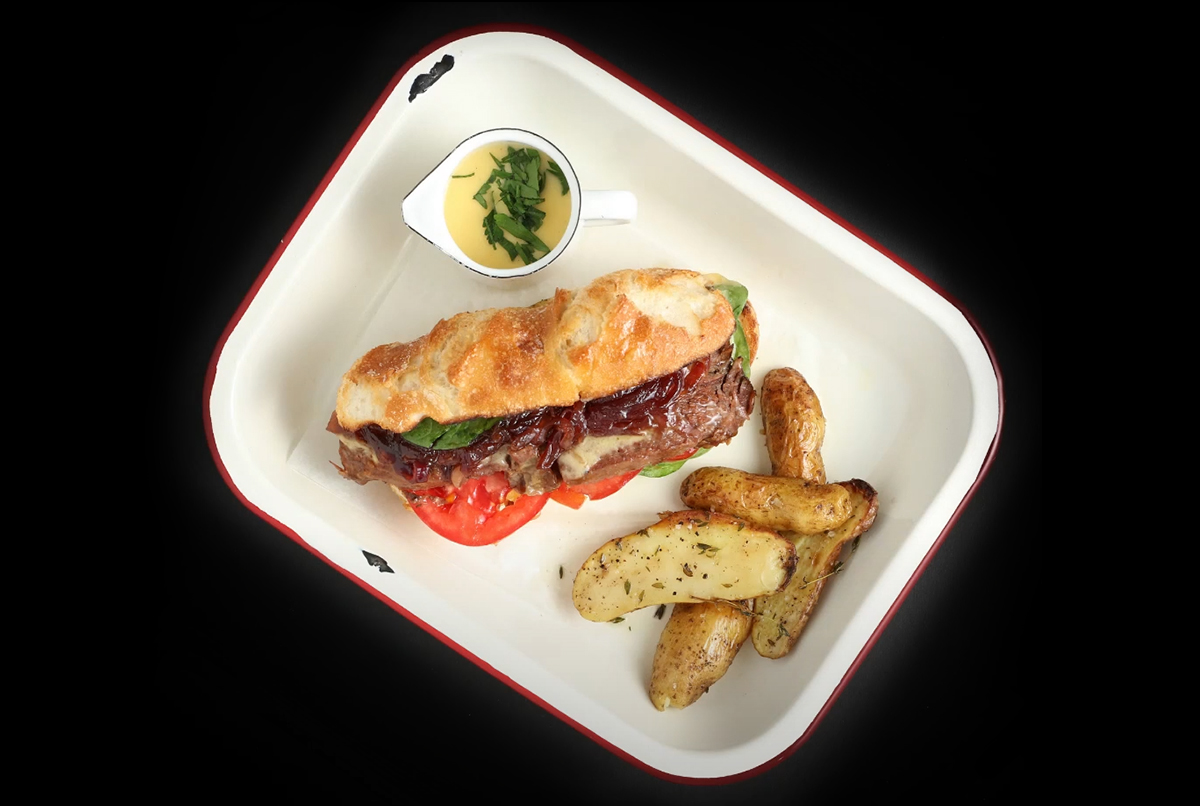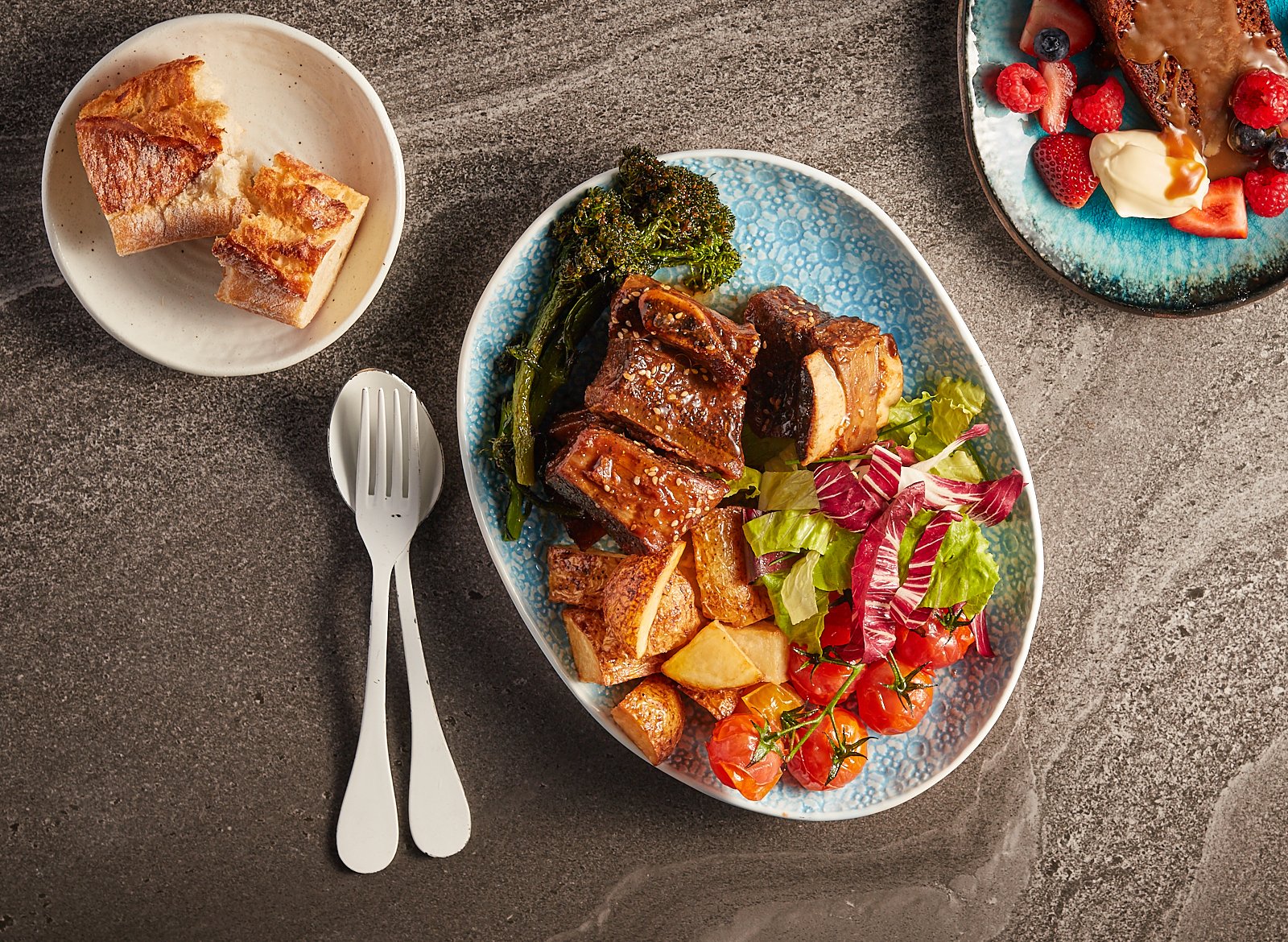Let’s get controversial: is it possible that the best shawarma is right here in Australia? Specifically, in fact, on Martin Place. If the heart of the financial district of Sydney seems like an unlikely place to go looking for a really good shawarma (over, say, downtown Beirut, or Osama bin Zaid Avenue in Bahrain, Marjah Square in Damascus, or the suburbs of Melbourne), consider this: it’s here on Martin Place that Paul Farag plies his trade, cooking at Aalia. And Paul Farag knows what’s up.
Unraveling the Twists: Shawarma vs. Gyros vs. Doner
The shawarma is basically a really big kebab cooked on a rotating skewer in front of a grill. The name comes from çevirme, the Turkish word “to turn”, according to the Lebanese food writer Anissa Helou.
This is one of the things it has in common with gyros, “gyro” being the Greek term for the same thing. But the gyro traditionally turns horizontally over coals, like a spit, while the shawarma is always cooked vertically. The Turkish doner kebab, meanwhile, is also cooked vertically in a similar shape, but it’s formed from minced lamb or beef, while the shawarma is made with slices of lamb that are marinated and then threaded together into a tight mass on the skewer.
"Aalia’s take on the shawarma – could it be the best?"
Shawarma: The Art, Regional Variations, and Global Influence
Lamb shoulder is the choicest cut, and in the better shawarma shops of Lebanon, Jordan, Syria and Palestine there might be thin slices of lamb-tail fat. The idea is that the fat, whether it’s from the shoulder, or the fat that’s added, melts over the hours that the shawarma cooks, basting the meat. The shawarma is sliced as it cooks, the shawarmanji working their art to carve off a pleasing mix of fat and lean, juicy bits and crunchy bits.
There’s plenty of regional variations in how it’s served, too, not least of all the bread, which might be taboon, lafah, pide, markook or even a chapati, depending on where you stand. While kebabs in Greece and Israel are loaded into pita, Lebanese shawarmas are wrapped snugly in khebez, the thinner flatbread usually sold in Australia simply as “Lebanese bread”.
There are also the variations that have really gone native, and the most famous example on this front is the taco al pastor.
Then there’s the shawarma that Paul Farag makes. Aalia is all about the Arabic food cultures (including Egypt, where his family is from), rendered in dazzlingly smart plates such as Iskender-style bone marrow with chermoula, a kibbe nayeh-inspired tartare of beef made tangy with rhubarb and black cardamom, and hawawshi, the Egyptian street sando, reimagined here as a mezze morsel of lamb with black garlic and lemon. The spicing is just as keen on the grill, with fenugreek and biber salçasi, the red-pepper paste, accompanying 2GR flank steak, the dry-aged Stockyard wagyu rib served with rose harissa, the AACo wagyu striploin with North African mustard.
"Lamb neck on the bone – Paul Farag’s pick of the carcase"
And, of course, the shawarma. It came about because Farag wanted to use lamb neck on the bone, as opposed to the lamb neck fillet most chefs use. “It’s the best bit in my opinion,” he says.
"Chermoula is added where the main tendon is removed from the whole neck"
The diner gets a section of the neck nestled into a blanket of saj, a flatbread that’s almost crepe-like in its delicacy. Randomly enough it was Farag’s nostalgia for eating cob loaf when he was a kid that inspired the plating.
“I guess I wanted to replicate that way of eating something which is always fun and really ties into the culture.”
There’s also some quietly elegant technique going on under the hood, too. “It’s one of those dishes that really is simple in its creation but works really well on many levels and ties into everything we try to accomplish here at Aalia,” says Farag, “like where we put the chermoula into the middle is where we remove the main tendon from the neck, and it also serves as a well to season the inside of the meat.”
Shawarma is the Middle East’s gift to the world. Perhaps in shawarma al Farag we’ve found something we can give back in reply.


